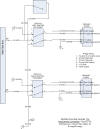frankh said:Well I'm certainly not looking for an argument here, just that we have both been given opposite advice for the same symptoms and while I do not have your experience of detonation there seems to be a few things that don't add up in my mind.
When my engine was borescoped it was found to be in perfect order so the outcome may well be fine in each case.
Can't say I have experienced the scenario you describe when running LOP, as I run roughly 100F LOP all the time and don't get any signs of pinging.
I understand how you can get blowby, by which I assume you mean the charge blows out of the exhaust valves rather than pushing the piston down?...This in theory would raise the EGT's but how does that explain the high CHT's you experienced?
Secondly, I thought you said you had redline (or at least high) oil temperature?
From my Google searching on "pre-ignition" The explanation I got was that charge was lit (or lit itself) while the piston was on its way up the bore, thus putting a great deal of stress on the piston and big end bearings because the piston was trying to compress a rapidly expanding charge. The resulting pressure forced this red hot charge past the rings and heated the oil directly in the sump, presumably with quite a bit of crankase venting going on too.
With all these nasty happenings going on it was suggested that the engine could well be damaged and the borescope would reveal the tell tale signs of pitted pistons etc.
As I said I'm just trying to learn here for mine and the collective benefit of the group.
Frank
You run 100 degrees lean of peak, all of the time? Really? Well, I guess I just learned something because I have never heard of that before. We can always learn something, that's for sure! I'm pretty sure I won't be doing that with my engine though.
Pre-ignition and detonation are 2 very different things. I'm not going to explain any more here as it would appear that Google has more to offer.
Take care,
Mark





